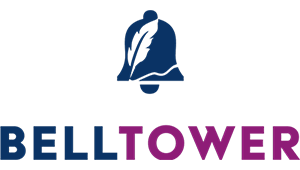Disaster Recovery for Local Governments
FEMA Public Assistance Funding
When disaster strikes—whether it’s a hurricane, tornado, earthquake, or wildfire—communities need swift support to recover and rebuild. FEMA’s Public Assistance Program steps in to provide supplemental grants to state, tribal, territorial, and local governments, as well as certain private non-profits. These grants help cover the costs of debris removal, emergency protective measures, and the restoration of public infrastructure. Additionally, FEMA supports hazard mitigation measures to protect damaged facilities from future events, ensuring communities are better prepared for what’s to come. This guide will walk you through the essential steps to access and manage FEMA Public Assistance funding, so you can focus on what matters most: rebuilding and protecting your community.

Eligibility
An applicant must be a state, territory, tribe, local government or private nonprofit organization.
Work is categorized as either “emergency” or “permanent.” It must be required as a result of the declared incident, located within the designated disaster area, and is the legal responsibility of the applicant.
Cost is the funding tied directly to eligible work, and must be adequately documented, authorized, necessary and reasonable. Eligible costs include labor, equipment, materials, contract work, as well as direct and indirect administrative costs.
A facility must be a building, public works system, equipment or natural feature.
Types of Work
EMERGENCY WORK – MUST BE COMPLETED WITHIN SIX MONTHS
- Category A: Debris removal
- Category B: Emergency protective measures
PERMANENT WORK – MUST BE COMPLETED WITHIN 18 MONTHS
- Category C: Roads and bridges
- Category D: Water control facilities
- Category E: Public buildings and equipment
- Category F: Public utilities
- Category G: Parks, recreational, and other facilities
Roles and Responsibilities
Multiple layers of government work in partnership to administer PA once a disaster has been declared. Each entity must work together to meet the overall objective of a quick, efficient, and effective program delivery.
FEMA: The federal awarding agency authorized to manage the PA program. FEMA’s primary responsibilities are to determine the amount of eligible funding, participate in educating the Applicant on specific program issues and procedures, assist the Applicant with the development of project applications and review the projects for compliance with laws, regulations, and policy.
Applicants: Entities submitting a request for assistance under the Recipient’s federal award.
Recipients: The State, Territorial, or Tribal government that receives and manages the federal award under the disaster declaration and disburses funding to eligible subrecipients.
Subrecipients: Applicants who have received a subaward from the Recipient and are then bound by the conditions of the award and subaward.
Application Process
When ready to apply, applicants should use the Public Assistance Grants Portal to account for all activities associated with their damage claims.
Applicants can use the Grants Portal to:
- Register for and update an applicant profile
- Submit a “Request for Public Assistance”
- Upload project documentation
https://youtube.com/watch?v=OnfbrPdMXv4
Resources
View the rates for applicant-owned equipment in good mechanical condition, which includes all costs eligible for ownership, operation and maintenance.
State- and county-wide public assistance per capita impact indicators and the minimum and maximum project cost thresholds for small projects.
Learn about the benefits and requirements of sharing the cost of goods or services with another applicant.
FEMA’s Emergency Management Institute offers Public Assistance independent study courses free of charge. View and enroll in courses numbered IS-1000 through IS-1026.
Access all forms related to the Public Assistance and Fire Management Assistance Grant programs, as well as Administrative Plan worksheet templates.
Use FEMA’s Cost Estimating Format (CEF) to determine the cost of eligible permanent work for large construction projects.
Knowing the federal procurement rules when purchasing goods and services under a FEMA grant programs will help increase your chance of securing and keeping the funding you need.
Learn about FEMA’s Public Assistance grants payment internal control review process which ensures FEMA’s compliance with statutory improper payment review and reporting requirements.
BRIC Direct Technical Assistance Communities
Through the Building Resilient Infrastructure and Communities Direct Technical Assistance initiative, FEMA can provide holistic hazard mitigation planning and project support at the earliest stages to communities, tribal nations and territories requesting assistance. This non-financial assistance helps communities and tribes in reducing disaster damage, building community resilience, and sustaining successful mitigation programs.
During the process, FEMA will engage with each community to further explore and better understand their specific requests for technical assistance.
Click here to view the selected communities for Fiscal Year 2023
2023 FEMA Resilience Year in Review
FEMA is excited to share with you the 2023 FEMA Resilience Year in Review report, which highlights the significant strides FEMA Resilience has made in enhancing the nation’s preparedness and resilience. The year 2023 displayed the escalating effects of the climate crisis with an emergency or disaster declaration occurring on average every three days. This report emphasizes the critical importance of collaboration and continuous improvement as we face escalating climate challenges together.
Key initiatives in this report include:
- Promoting Equity: Ensuring that all communities, especially those historically underserved, have access to the resources and support needed to strengthen their resilience.
- Expanding Climate Resilience Programs: Implementing innovative strategies and programs to address the growing challenges posed by climate change.
- Improving Community Readiness: Offering targeted assistance and legislative reforms to better support communities in their resilience efforts.
By showcasing these achievements and outlining our future goals, we aim to inform you of our ongoing commitment to building a resilient and prepared nation.
We appreciate your continued support and partnership in these efforts. Together, we can make significant strides towards a safer and more resilient future for all.
FEMA Releases Updated Guide to Help Communities with Resilience Grants Process
Following valuable feedback from grant applicants, FEMA has updated the Hazard Mitigation Assistance Guide to make it more user-friendly.
The update consolidates information and eligibility requirements for Hazard Mitigation Assistance (HMA) projects addressing air quality, drought, extreme temperatures, wildfire and wind. It also reflects recent policy changes to simplify program delivery through streamlined cost effectiveness methods and a lower benefit-cost analysis discount rate.
State, local, tribal and territorial governments may use the guide to navigate the application process and manage the grant lifecycle to receive critical resilience dollars. Information in the guide includes policies and processes to enable effective and consistent implementation across all HMA programs.
HMA provides funding to reduce the risk and impact of disasters such as wildfires, drought, extreme heat, hurricanes, earthquakes and flooding. Programs in HMA are Building Resilient Infrastructure and Communities (BRIC), Flood Mitigation Assistance, Hazard Mitigation Grant Program (HMGP) and HMGP Post Fire.
The update follows the update last year—the first since 2015—that incorporated climate change and future conditions, equity, building codes, capability and capacity building, nature-based solutions and community lifelines as key principles for its grant programs. It was also the first guide to cover BRIC.
This aligns with FEMA’s “people first” approach and helps communities build climate resilience through reducing complexity and barriers to accessing our HMA grant funds. It also aligns with the 2024 FEMA Year of Resilience theme to build capacity to withstand tomorrow’s hazards.
FEMA is offering two Office Hours sessions which provides an overview of the recent updates. Registration is now open.
- Session #1: Aug. 15, 2-3 p.m. ET
- Session #2: Sept. 12, 2-3 p.m. ET
Visit FEMA.gov to access the guide.

Founded in 2009, BellTower Consulting Group has assisted nonprofit organizations and municipalities in securing grant funding for youth programs, social services, infrastructure, parks and recreation, arts programming and much more.
Thank you for dropping by! To learn more about our services, please click the button below.
Follow us:
© Copyright 2020. All Rights Reserved. | Managed by Brand Poets.
